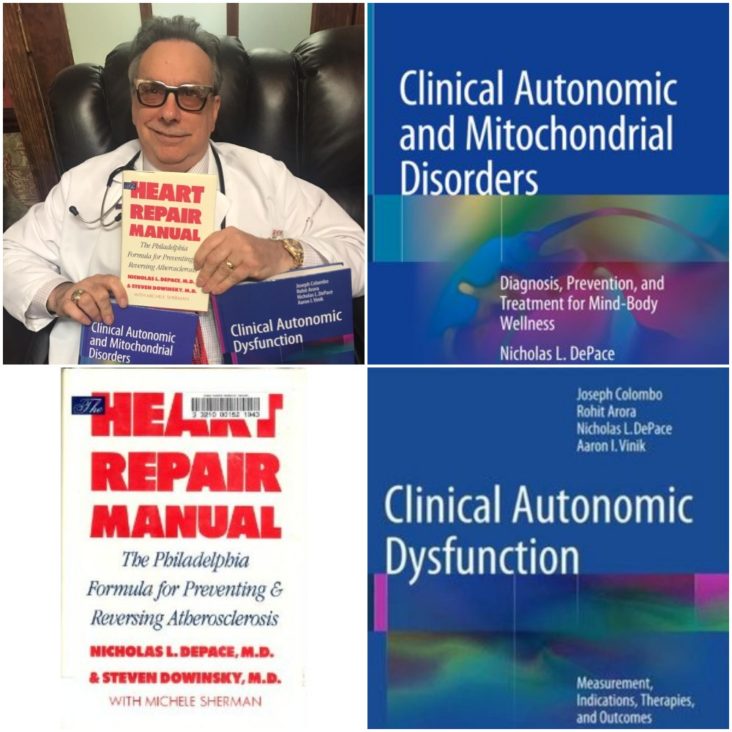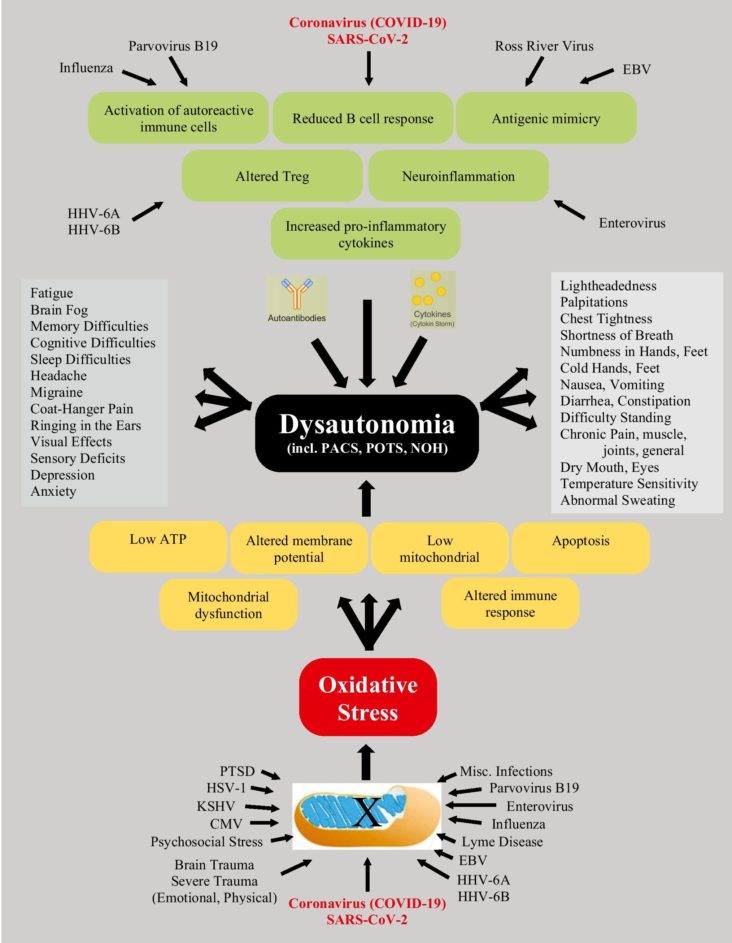Click here to download this post
Autonomic Nervous System Dysfunction in Ehlers-Danlos Syndrome
by Nicholas DePace MD, FACC, and Michael Edward Goldis DO, FACOI, MS, BS in Pharm
The autonomic nervous system (ANS) runs all background bodily functions that do not require a conscious thought process. Major consequences of autonomic dysfunction include abnormal and inappropriate blood volume and flow distribution to the body with gravitational pooling and difficulty returning blood to the heart.
Direct nerve dysfunction can affect pupil size and abnormal motility of the gastrointestinal (GI) tract, compensations which are adaptive mechanisms in the body’s attempt to compensate for autonomic dysfunction, which can cause adverse symptoms. There are 2 components: (1) the sympathetic nervous system, which releases predominantly norepinephrine and is the “accelerator” of the body; (2) the parasympathetic nervous system releases acetylcholine which is the “break” of the body.
The vagus nerve is the main component of the parasympathetic nervous system and is the longest nerve in the body. Because of its long distribution and size, it is susceptible to injury.
Impairment of blood flow to the brain, which is poor perfusion, leads to lightheadedness, tunnel vision, blackout vision, change in hearing, perception, complete loss of consciousness, syncope, presyncope, the need to lie down, giddiness, word-finding difficulties, and short term memory loss.
These occur in the standing position almost always or occasionally sitting, but not lying. These symptoms are known as orthostatic intolerance. Mental cloudiness and brain fog are described.
Lack of perfusion to the brain may precipitate migraines. Light intolerance, photophobia, bothersome sensation to loud noises, anxiety, insomnia, and depression may or may not reflect poor cerebral perfusion.
Ehlers Danlos Syndrome is often associated with GI motility and may be associated with mast cell activation. What the mast cells do is release histamine inflammatory mediators. This accounts for the overlapping features not EDS like abdominal pain and poor GI motility with foggy thinking.
There is an article in the New England Journal of Medicine that feels irritable bowel syndrome (IBS) is the result of a histamine abnormality. What the actual cause is controversial.
While some physicians believe there’s a component of autoimmunity, we believe there is an abnormal connective tissue in the veins precipitating the venous pooling phenomenon, there is poor cerebral perfusion, and Sympathetic overdrive leading to dysautonomia.
There may also be an anatomical component to the autonomic dysfunction when you consider the vagus nerve is a parasympathetic nerve and the most prominent and longest in the parasympathetic nervous system.
It is the 10th cranial nerve and arises from the brain stem located auth the junction between the cranium and the first cervical vertebrae, which is also at the base of the cerebellum.
Any craniocervical instability in this region or compression of the vagus nerve could potentially have profound effects on vagus nerve function. Craniocervical instability is common in EDS and needs flexion and extension radiographic images and proper measurements to clearly characterize it.
The vagus nerve exits from this location along with the ninth cranial nerve, the glossopharyngeal nerve, and the eleventh cranial nerve which is known as the spinal accessory nerve.
The vagus nerve then branches throughout most of the body. The vagus is both afferent sensory and efferent motor. This sensory fiber for the vagus takes information from the GI tract and runs it back to the brain, while the motor activity directs the bodily functions in many organs.
Some physicians describe the enteric nervous system as an organism “second brain” which can function completely in the absence of central nervous system input. The vagus nerve as well as the parasympathetic nervous system in general uses the neurotransmitter acetylcholine to transmit information from the presynaptic nerve termination to the end organ.
There can be abnormalities from the brain to the ganglia or from the end receptors where acetylcholine is released. There are about 30 neurotransmitters within the enteric nervous system which include more than 90% of the body’s serotonin and 50% of the body’s dopamine.







